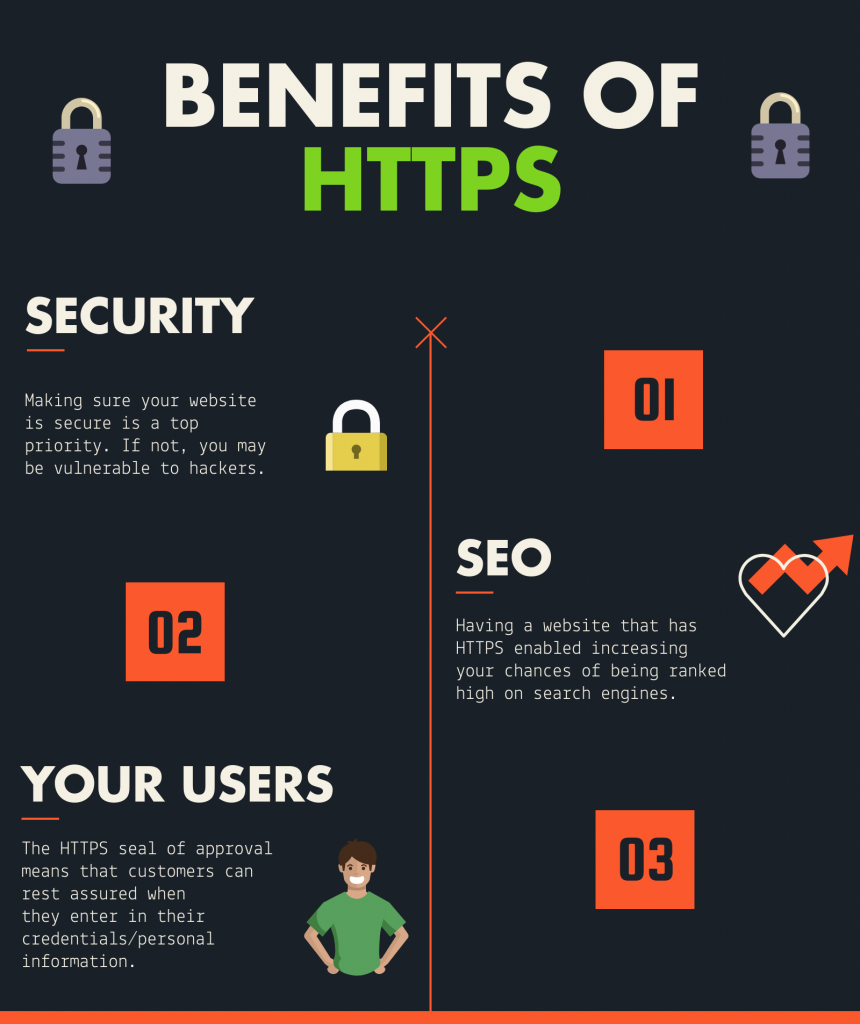In an increasingly digital world, the symbiotic relationship between security and trust online cannot be overstated. While HTTPS is an essential foundation for safeguarding data in transit, it is merely the first brick in a robust wall that every website owner must construct to ensure their online presence is secure and reputable. This article delves into the rationale for why your website requires more than just HTTPS, exploring various components that contribute to a comprehensive security strategy, enhancing user experience, and ultimately cultivating trust.
At the outset, let’s examine the critical role HTTPS plays. Hypertext Transfer Protocol Secure (HTTPS) protects the integrity and confidentiality of data between users’ computers and the site itself. It prevents eavesdropping, tampering, and man-in-the-middle attacks. Nevertheless, while HTTPS encrypts the connection, it does not shield a website from all possible vulnerabilities. Thus, an exclusive reliance on HTTPS poses significant risks, necessitating a broader security approach.
One glaring vulnerability that HTTPS does not address is the proliferation of malicious software—malware—that can compromise both websites and user devices. Websites can be injected with harmful scripts that can lead to data breaches or unauthorized access to sensitive information. Regular scanning for vulnerabilities and employing web application firewalls (WAF) are pivotal practices. Serving as a protective barrier, a WAF filters, monitors, and blocks harmful traffic before it reaches your application. This proactive stance amplifies your website’s security beyond what HTTPS alone can provide.
Moreover, the importance of software updates cannot be underestimated. Websites typically run on platforms such as Content Management Systems (CMS) like WordPress, Joomla, or Drupal, which frequently release updates to patch identified vulnerabilities. Failure to apply these updates not only weakens your website’s defenses but may also result in compatibility issues and reduced functionality. Routine maintenance is essential; neglecting this duty invites an open invitation for attackers.
Equally important is the concept of website integrity. Regularly conducting security audits allows you to assess your website’s vulnerabilities and rectify them before they become critical issues. These audits encompass a thorough review of your existing security protocols, ensuring that your data encryption methods, access controls, and user permissions are optimally configured. A website that demonstrates a commitment to integrity fosters confidence among users, enhancing overall user experience.
Beyond the technical nuances of security lies the psychological aspect of user trust. Incorporating clear, transparent privacy policies and terms of service fosters a sense of reliability. Users should feel confident about how their information will be used and protected. Implementing easy-to-understand language and straightforward processes to access personal data will bolster consumer trust. When users comprehend how their data is managed, they will be more inclined to engage with your website.
While security is paramount, effective user experience significantly influences a visitor’s perception of trustworthiness. Website optimization is indispensable in this regard. A website that is slow, poorly designed, or challenging to navigate often detracts from user experience, leading to high bounce rates. Integrating responsive design, fast load times, and intuitive navigation can enhance overall satisfaction and diminish the potential loss of visitors. Search engine optimization (SEO) also plays a role, as search engines reward well-constructed sites with better visibility, further enhancing credibility.
Moreover, securing a website is not simply about preventing breaches. It encompasses inclusivity and accessibility. Utilizing standards such as the Web Content Accessibility Guidelines (WCAG) ensures that your website can be navigated and understood by users with disabilities. This approach broadens your audience, while also demonstrating a commitment to ensuring that all individuals can access your content. An accessible website is not just ethical; it is an investment in diversity and inclusion, resulting in greater overall user engagement.
As cyber threats continue to evolve, the need for robust authentication mechanisms becomes evident. Two-factor authentication (2FA) provides an added layer of security. By requiring users to verify their identity through multiple methods—such as text messages, emails, or authentication apps—this mechanism bolsters user accounts against unauthorized access. Embracing multifactor authentication can be a deciding factor in safeguarding user data, strengthening the credibility of your website.
Furthermore, considering the potential risks associated with outdated or unverified third-party plugins and software components is essential. Malicious actors often exploit these components to gain access to a site. A diligent website owner engages in a thorough vetting process before integrating any third-party solutions, ensuring that they come from reputable sources with established security measures in place. This precaution mitigates vulnerabilities and ensures that the website remains robust against external threats.
In conclusion, while HTTPS is a fundamental component of web security, it is not an all-encompassing solution. A secure website requires a multifaceted approach, integrating vulnerability scanning, consistent software updates, comprehensive user policies, effective UX design, accessibility standards, multi-factor authentication, and the vigilant management of third-party plugins. By adopting a holistic view of website security, business owners not only protect their assets but also cultivate an environment of trust and reliability among users. Ultimately, crafting a secured and trustworthy web experience is not simply an obligation; it is an opportunity to engage and inspire confidence in an ever-evolving digital ecosystem.








Leave a Comment